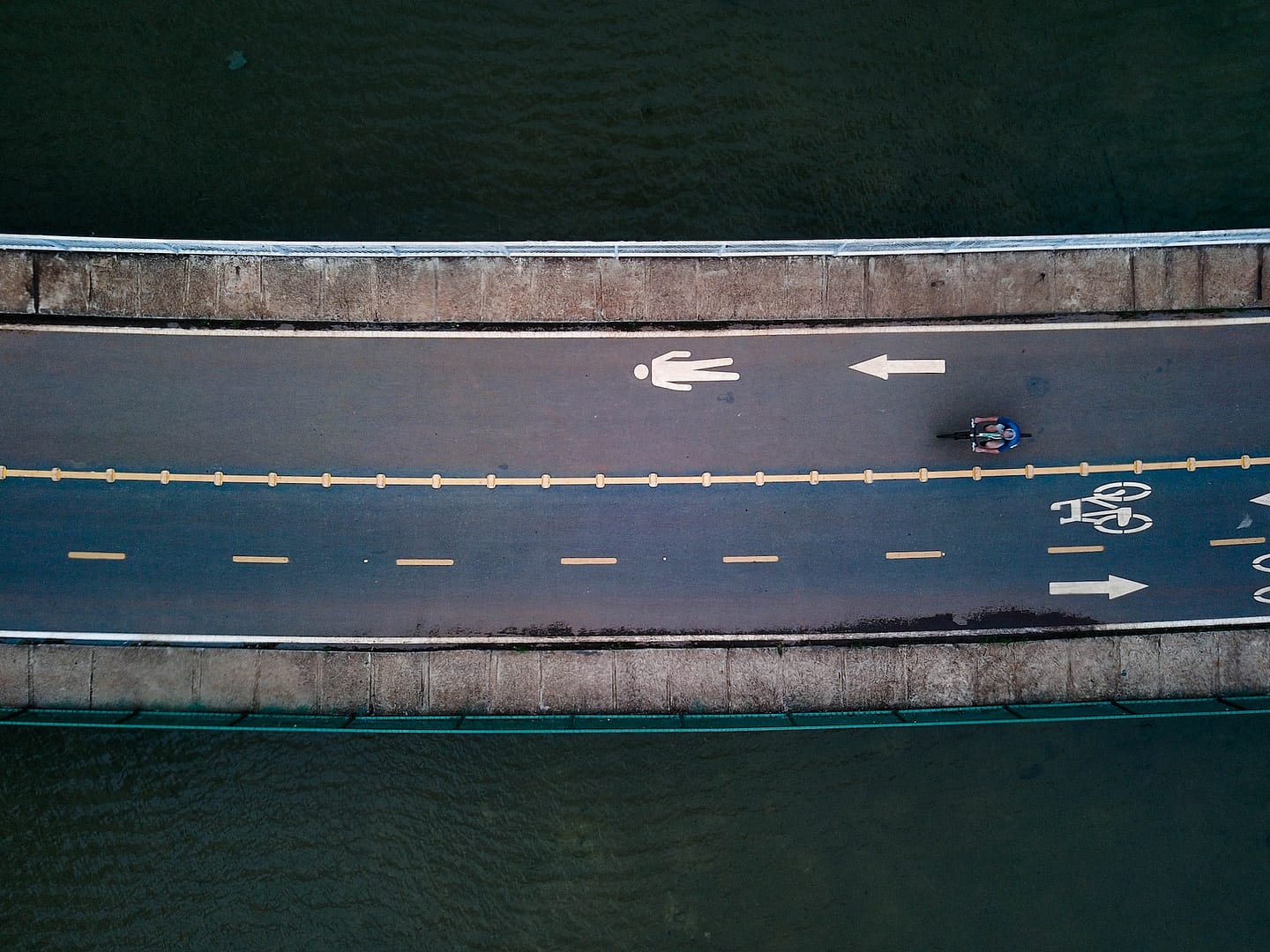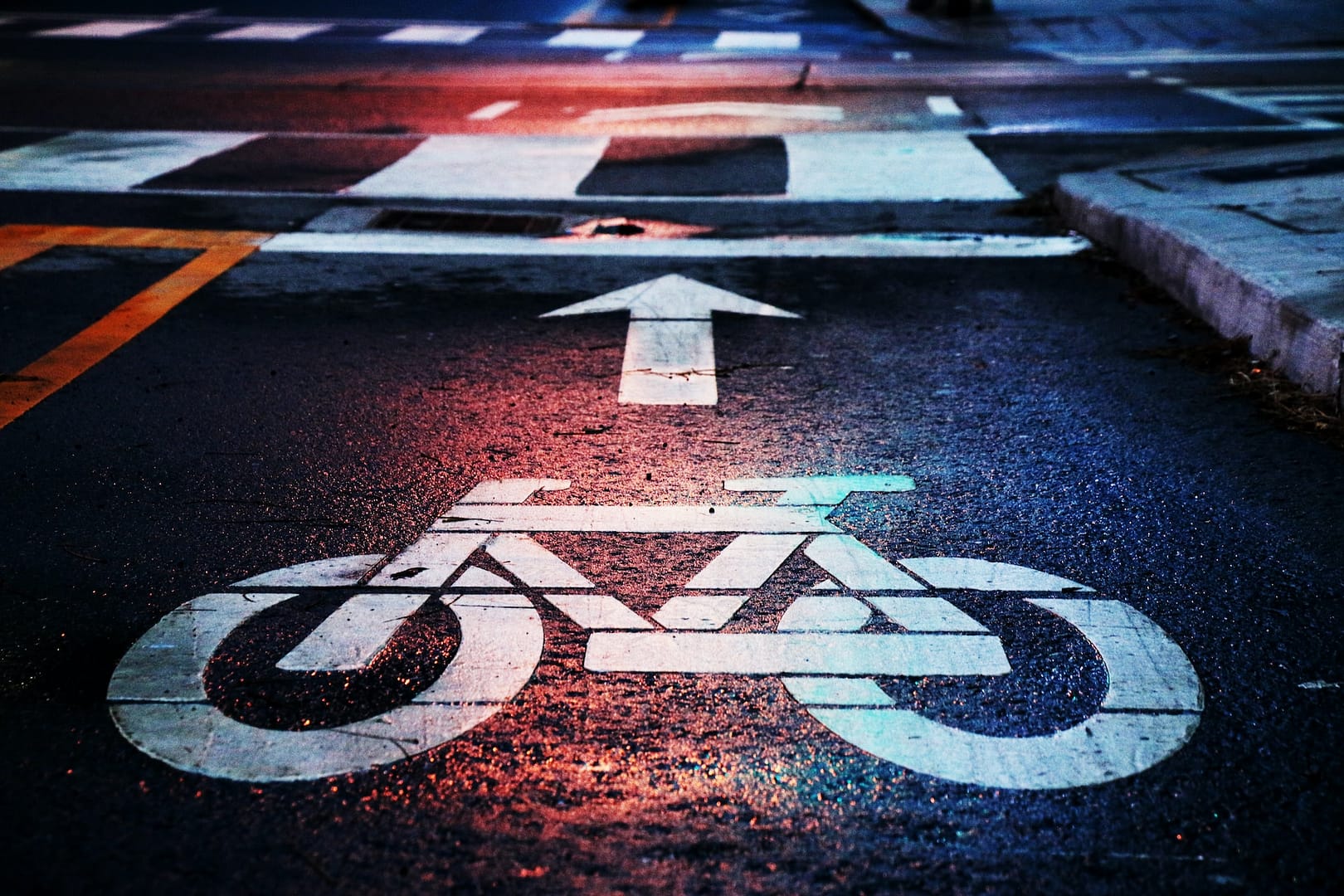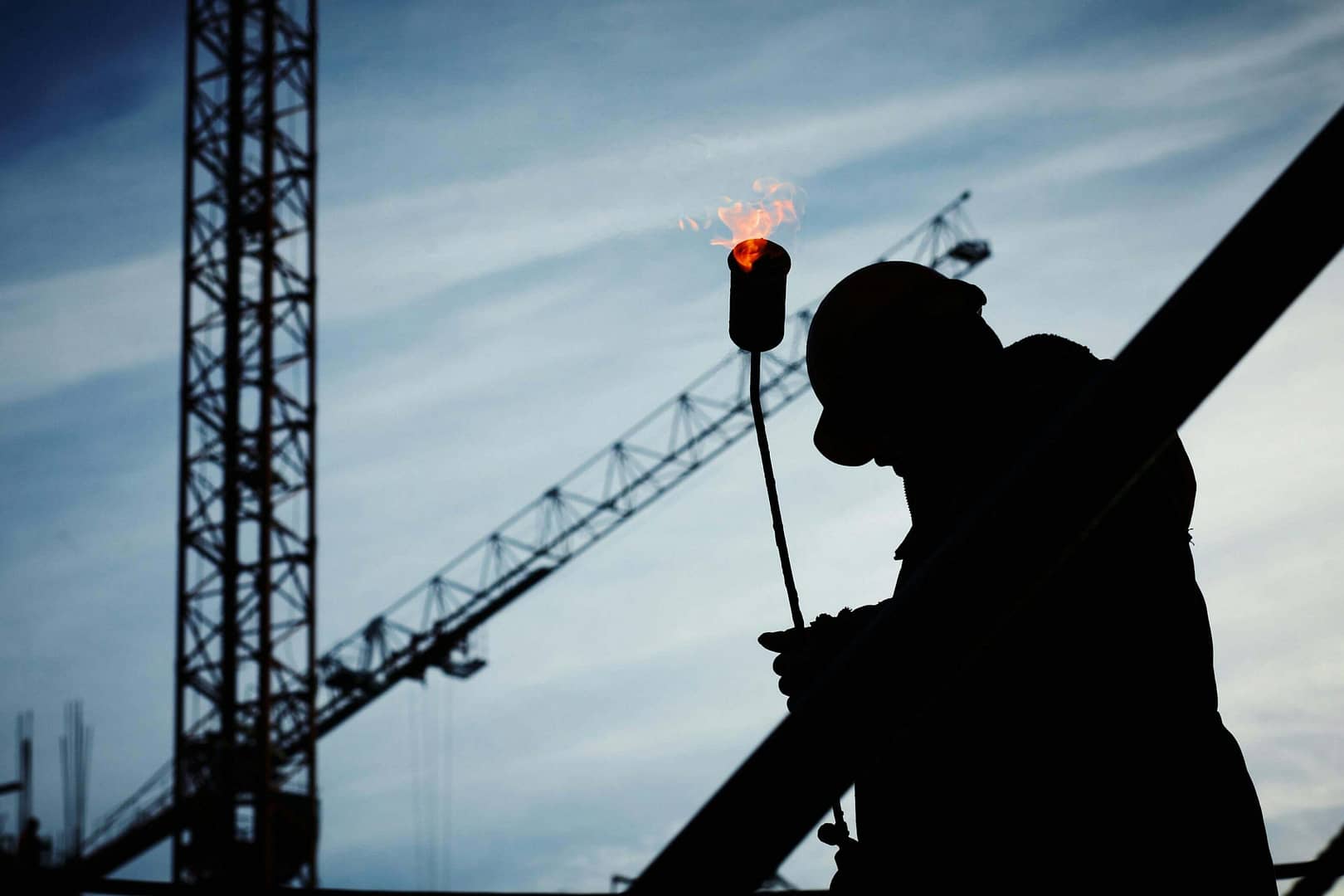In recent years, the importance of cycling as a sustainable mode of transportation has gained significant recognition. As cities across the globe grapple with issues related to traffic congestion, air pollution, and the need for healthier lifestyles, the integration of bike lanes into urban landscapes has emerged as a viable solution. However, as cyclists share the road with motor vehicles, safety becomes a paramount concern. This article explores the effectiveness of bike lanes in protecting cyclists, with a focus on the benefits of bicycle lanes and the concept of protected bike lanes. This article also highlights how best to start a road traffic accident claim.
Benefits of Bicycle Lanes
Bicycle lanes, often referred to as bike lanes, are dedicated roadways or portions of roadways specifically designated for the use of cyclists. These lanes are typically marked with painted lines, bike symbols, and, in some cases, physical barriers to separate cyclists from vehicular traffic. The primary goal of bike lanes is to create a safer environment for cyclists while promoting cycling as a mode of transportation. Let’s delve into some key benefits of bicycle lanes:
Enhanced Safety
One of the most significant advantages of bike lanes is the improved safety they offer to cyclists. By providing a dedicated space for cycling, bike lanes reduce the risk of accidents and collisions between cyclists and motor vehicles. This separation not only reduces the likelihood of accidents but also mitigates their severity when they do occur.
Encouragement of Cycling
Bike lanes play a crucial role in promoting cycling as a viable mode of transportation. When individuals feel safe and confident while cycling, they are more likely to choose this eco-friendly and healthy means of getting around. As a result, bike lanes can help reduce traffic congestion and decrease the carbon footprint of a city.
Health and Well-being
Cycling is an excellent form of physical exercise that offers numerous health benefits. By providing designated lanes for cyclists, cities encourage residents to adopt a more active lifestyle. Regular cycling can help reduce the risk of chronic diseases, improve cardiovascular health, and contribute to overall well-being.
Reduced Stress
Bike lanes not only benefit cyclists but also have positive effects on drivers. When cyclists have their own lanes, it reduces conflicts with motor vehicles, leading to a smoother traffic flow and decreased road rage. This, in turn, contributes to reduced stress levels for all road users.
Economic Benefits
Investing in bike lanes can have positive economic impacts on cities. Encouraging cycling can reduce the demand for costly road infrastructure projects, such as expanding highways or building new roads. Additionally, the increase in bicycle-related businesses, such as bike shops and rentals, can boost the local economy.
Environmental Sustainability
Reducing the number of cars on the road by promoting cycling has a direct positive effect on the environment. Fewer vehicles mean reduced air pollution and greenhouse gas emissions, contributing to cleaner air and a healthier planet.
Protected Bike Lanes: A Closer Look
While traditional bike lanes offer many benefits, they often share space with motor vehicles, leading to potential conflicts and safety concerns. This has led to the development of a concept known as “protected bike lanes,” which take bike lane safety to the next level.
Protected bike lanes, also known as cycle tracks or separated bike lanes, provide a physical barrier between cyclists and motor vehicles. These barriers can include curbs, bollards, planters, or even parked cars. The key idea is to create a dedicated space for cyclists that is entirely separate from vehicular traffic.
Key Features of Protected Bike Lanes
Protected bike lanes typically exhibit the following features:
Physical Separation
As mentioned earlier, the most defining characteristic of protected bike lanes is their physical separation from motor vehicles. This physical barrier enhances cyclist safety by preventing vehicles from encroaching into the bike lane.
Designated Signalisation
In many cases, protected bike lanes come with their own traffic signalisation, including bike-specific traffic lights and signal timings. This ensures that cyclists have their own right-of-way at intersections, further reducing conflicts with cars.
Well-Marked Crossings
Protected bike lanes are designed with well-marked crossings at intersections and driveways. These markings make cyclists more visible to drivers and help prevent accidents when cyclists cross paths with motor vehicles.
Improved Intersection Design
Intersection design is a crucial aspect of protected bike lanes. Special attention is given to creating safe and intuitive intersections, often involving features like bike boxes and dedicated turning lanes for cyclists.
Increased Comfort
The physical separation and additional safety measures make protected bike lanes more comfortable for cyclists of all skill levels. This increased comfort encourages more people to take up cycling as a mode of transportation.
Effectiveness of Protected Bike Lanes
The concept of protected bike lanes has gained significant traction in urban planning and transportation policy discussions. But do these lanes truly live up to their promise of enhancing cyclist safety? Let’s explore the evidence.
Research Findings
Numerous studies and research projects from around the world have examined the effectiveness of protected bike lanes in protecting cyclists. One notable source of such research comes from the United Kingdom, where cities like London and Manchester have implemented extensive networks of protected bike lanes.
How Effective are Bike Lanes in Protecting Cyclists
Research conducted in the UK suggests that protected bike lanes have led to a substantial reduction in cyclist injuries and fatalities. For example, a study by the Transport Research Laboratory found that the installation of protected bike lanes in London resulted in a 50% reduction in cycling injuries at the treated locations. This substantial reduction underscores the importance of physical separation between cyclists and motor vehicles.
User Experience
User experience is another vital aspect of assessing the effectiveness of protected bike lanes. Cyclists who use these lanes often report feeling safer and more comfortable while cycling. This positive experience can lead to increased ridership and a shift towards cycling as a preferred mode of transportation.
Encouraging Diverse Ridership
Protected bike lanes also have the potential to encourage a more diverse group of people to take up cycling. When individuals perceive cycling as safe and accessible, they are more likely to give it a try. This includes not only experienced cyclists but also those who may be less confident on the road, such as children and seniors.
Reduced Conflicts
The physical separation provided by protected bike lanes significantly reduces conflicts between cyclists and motor vehicles. This is particularly important at intersections, where many accidents involving cyclists occur. The combination of designated signalization and protected lanes helps ensure that cyclists and drivers are well-informed about their respective rights-of-way.
Challenges and Considerations
While the effectiveness of protected bike lanes is well-documented, it’s essential to acknowledge some challenges and considerations associated with their implementation:
Space Constraints
Creating physically separated bike lanes often requires reallocating road space. In densely populated urban areas, this can be a challenge as it may result in the loss of parking spaces or vehicle lanes, leading to resistance from some stakeholders.
Maintenance
Protected bike lanes may require additional maintenance, especially in regions with harsh weather conditions. Ensuring that barriers, lane markings, and signage remain in good condition is essential to providing a safe cycling environment.
Costs
The construction of protected bike lanes can be costly, primarily due to the need for physical infrastructure such as curbs, bollards, and planters. Cities must weigh these costs against the long-term benefits of improved cyclist safety and reduced healthcare expenses associated with accidents.
Community Engagement
Engaging with the local community and gathering input from residents is essential when planning and implementing protected bike lanes. Ensuring that the lanes meet the needs of cyclists while addressing concerns from other road users is crucial to successful implementation.
Making a Road Traffic Accident Claim with National Claims
At National Claims, we understand the importance of ensuring that cyclists are adequately protected on the roads. We also recognise that accidents can happen, even on the safest routes. In this section, we’ll guide you through the claims process with National Claims.
Contacting National Claims
If you’ve been involved in a road traffic accident while cycling, the first and most crucial step is to get in touch with National Claims. You can reach out to us through our dedicated helpline or visit our website to start the claims process. Our team of experienced professionals is here to assist you every step of the way.
Gathering Information
Once you’ve contacted National Claims, our team will guide you through the process of gathering essential information. This information includes details about the accident, such as the date, time, and location, as well as the names and contact information of any witnesses. We’ll also need information about your injuries and any medical treatment you’ve received.
Legal Consultation
After we’ve collected the necessary information, our legal experts will provide you with a consultation. During this consultation, we’ll assess the merits of your case and determine the best course of action. If we believe you have a valid claim, we’ll guide you through the legal process and explain your rights and options.

Conclusion
In conclusion, National Claims is committed to protecting the rights of cyclists and ensuring that they receive fair compensation in the event of a road traffic accident. Our team of experts will guide you through the claims process, from gathering information to negotiating with insurance companies or representing you in court if necessary.
Cycling is not only an eco-friendly mode of transportation but also a healthy and enjoyable activity. By providing dedicated bike lanes and offering support to cyclists who have been involved in accidents, we can create a safer environment for cyclists and encourage more people to embrace this sustainable form of transportation.
If you’ve been in a cycling accident and need assistance with your claim, don’t hesitate to contact National Claims. We’re here to help you navigate the legal process and ensure that your rights are protected every step of the way. Together, we can work towards a future where cyclists can ride confidently, knowing that they have the support they need in case of an accident.
Contact us to get started on your claim for your road traffic accident and speak to one of our claims specialists today.
Click below to see why we are one of the most trusted claims management companies in the UK.

We’re proud of our excellent customer reviews
We thrive on delivering exceptional service and ensuring our clients’ satisfaction. Don’t just take our word for it. Check out some of our independent reviews to see what our clients have to say.
Excellent

This firm is excellent, they sorted out my car pay out and injury claim very fast, they always communicate with you all the time.

My accident case was dealt with confidence and with great result of the outcome, especially James kept me informed all the time.

I was very impressed at the way my inquiry was treated. I was listened to attentively and everything I needed to know was explained to me.






